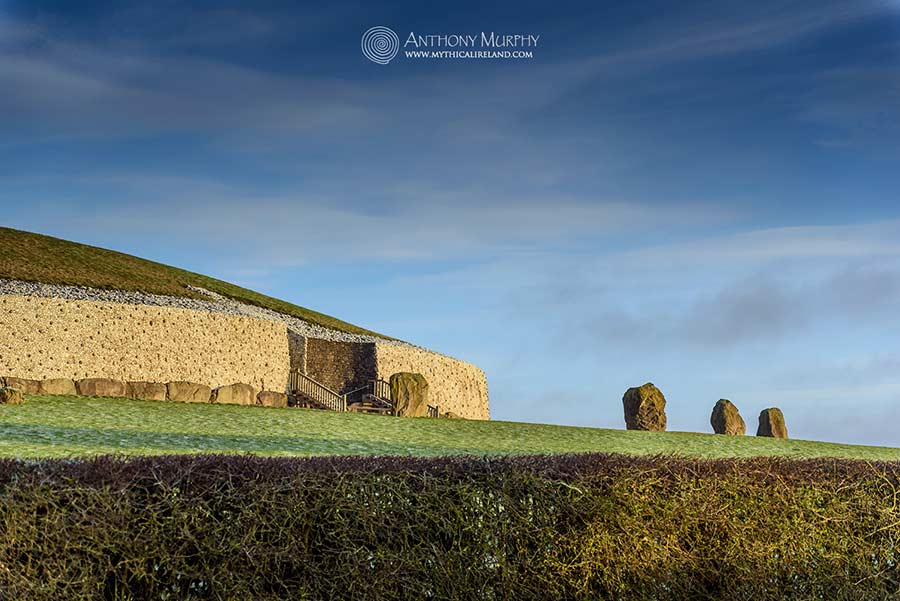A new study in the journal Nature suggests that the Neolithic population of ancient Britain was almost completely replaced by newcomers, the Beaker people, by about 2500BC. The huge study involved the extraction of DNA from 400 ancient Europeans, including samples from Neolithic, Copper Age and Bronze Age peoples, 226 of them from the Beaker period.
The lead author of the study, Professor David Reich of the Harvard Medical School in Cambridge in the USA, told the BBC that: "The magnitude and suddenness of the population replacement is highly unexpected."
A major debate has for years raged around the cause of the spread of the Beaker complex, which reached Britain and Ireland around the same time. Archaeologists wondered what caused this spread, whether it was a mass movement of people, culture or a combination of both.
The newcomers replaced about 90% of the existing gene pool in Britain in the space of just a few centuries. The reasons for this are not known, but it is thought factors such as climate change, disease and ecological disaster might all have played a role.
The Neolithic brought agriculture to Britain and Ireland, around 6,000 years ago. It was during that period that the great megalithic momuments were built. This passage-tomb-building culture had its zenith at Brú na Bóinne, where Newgrange, Knowth and Dowth were the largest such monuments constructed in Ireland. But shortly after this apex in the achievements of the Neolithic people, something dramatic happened. The type of monument being built changed dramatically. The passage-tombs went out of fashion. The Bronze Age saw the introduction of henges, or embanked enclosures, and burial mounds were simpler constructions – barrows, low earthen mounds.
The new way of life that had spread from Europe into Britain and Ireland around 4,450 years ago saw people burying their dead with stylised bell-shaped pots, copper daggers, arrowheads, stone wrist guards and distinctive perforated buttons. It is thought that the Beaker traditions initially flourished in Iberia, as "a kind of fashion", from about 5,000 years ago. From there, the culture propagated quickly to Central Europe, and from there, according to the BBC article, it "exploded in every direction".
Prof Reich told BBC News: "Archaeologists ever since the Second World War have been very sceptical about proposals of large-scale movements of people in prehistory. But what the genetics are showing - with the clearest example now in Britain at Beaker times - is that these large-scale migrations occurred, even after the spread of agriculture."
The comprehensive genetic study detailed in the new paper (entitled The Beaker phenomenon and the genomic transformation of northwest Europe) shows that the Beaker people were a distinct population from the Neolithic British. Following their arrival, the Beaker genes appear to swamp those of the native farmers.
Because the Beaker people arrived into both Britain and Ireland at around the same time, it is assumed that something similar occurred here. Indeed, the construction of large stone sites involving huge labour (and presumably a substantial "buy-in" from the Neolithic population of the time) comes to an end in Britain. As Mike Parker Pearson from University College London (UCL) said, "[The Beaker people] are not prepared to collaborate on enormous labour-mobilising projects; their society is more decentralised." The construction of massive stone monuments involving the co-opting of hundreds of people, which was an alien concept to the Beakers,was a "core rationale" of the Neolithic people.

From an Irish point of view, this is all very interesting. A climate downturn around 3500BC was said to have pushed Neolithic populations into a thousand-year-long decline. Around 2500BC, the population is at a low level, and then the Beakers arrive.
I am particularly interested in whether some of this is mentioned in Irish mythology. I have discussed the possibility that the downturn in the climate might have brought an increased urgency around the scale and nature of monument and ritual in Neolithic Ireland. (See Mythical Ireland: New Light on the Ancient Past, chapter 4.1) I also speculated that the mythology of the younger god (Oengus Óg) replacing the older solar god (Dagda) at Newgrange (Síd in Broga) might relate to the wish of the community for a stronger sun to return, because undoubtedly a climatological downturn would have negatively affected agricultural production, upon which they relied.
But now, following the publication of this new study, I am also interested in the invasion myths, and in particular the arrival of the Milesians to take Ireland from the Tuatha Dé Danann. This is related in the Lebor Gabála (Book of Takings). Does the conquest of the Tuatha Dé Danann (TDD), who retreat into the sídhe (burial mounds) by the Milesians relate to this period when the Neolithic farming population was being replaced by the arriving Beaker folk? It's a fascinating possibility.
The fact that the Dé Dananns agree to enter the mounds is interesting. They are the ones in mythology associated with the building and distribution of the various sídhe to the deities and figureheads of the TDD. Their culture, for various reasons, was dying. The myth sees them "dying" into their own burial mounds.
The Milesians come from Spain, the suggested source of the Beaker culture. The Milesians in myth are said to be sons of Mil, the king of Spain.
The Lebor Gabála has long been described as a pseudo-historical narrative, and is considered by some to be mere myth. However, one must always be careful with myth not to dismiss it out of hand as mere storytelling. There would appear to be a core truth at the centre of this ancient story which chronicles the arrival of mythical peoples into Ireland.
You can hear me discuss this new paper and the myth in the very first Mythical Ireland podcast below:
Relevant links:
Neolithic and Bronze Age migration to Ireland and establishment of the insular Atlantic genome
Massive migration from the steppe was a source for Indo-European languages in Europe

